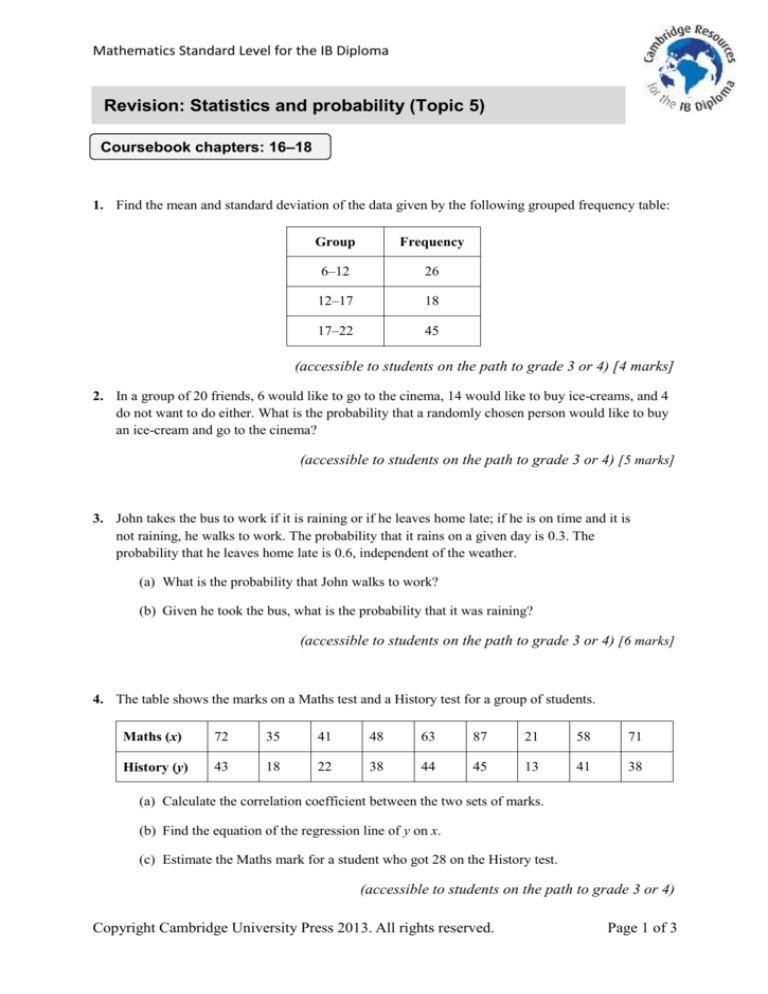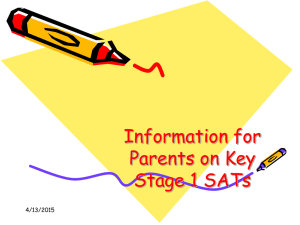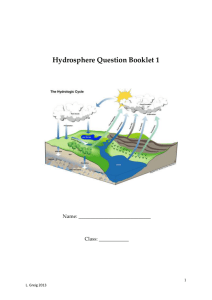
Mathematics Standard Level for the IB Diploma
Revision: Statistics and probability (Topic 5)
Coursebook chapters: 16–18
1. Find the mean and standard deviation of the data given by the following grouped frequency table:
Group
Frequency
6–12
26
12–17
18
17–22
45
(accessible to students on the path to grade 3 or 4) [4 marks]
2. In a group of 20 friends, 6 would like to go to the cinema, 14 would like to buy ice-creams, and 4
do not want to do either. What is the probability that a randomly chosen person would like to buy
an ice-cream and go to the cinema?
(accessible to students on the path to grade 3 or 4) [5 marks]
3. John takes the bus to work if it is raining or if he leaves home late; if he is on time and it is
not raining, he walks to work. The probability that it rains on a given day is 0.3. The
probability that he leaves home late is 0.6, independent of the weather.
(a) What is the probability that John walks to work?
(b) Given he took the bus, what is the probability that it was raining?
(accessible to students on the path to grade 3 or 4) [6 marks]
4. The table shows the marks on a Maths test and a History test for a group of students.
Maths (x)
72
35
41
48
63
87
21
58
71
History (y)
43
18
22
38
44
45
13
41
38
(a) Calculate the correlation coefficient between the two sets of marks.
(b) Find the equation of the regression line of y on x.
(c) Estimate the Maths mark for a student who got 28 on the History test.
(accessible to students on the path to grade 3 or 4)
Copyright Cambridge University Press 2013. All rights reserved.
Page 1 of 3
Mathematics Standard Level for the IB Diploma
5. Measured salt levels in water samples taken from a lake are seen to follow a normal distribution
with mean 0.3 and standard deviation 0.04. Two measurements are taken. Find the probability
that:
(a) both measurements are greater than 0.36
(b) one measurement is greater than 0.4 and one is less than 0.4.
(accessible to students on the path to grade 5 or 6) [6 marks]
6. A particular breed of chicken produces eggs whose masses are known to follow a normal
distribution with mean 50 g and standard deviation 4 g.
It is found that the probability of any egg with mass in excess of 60 g being 'double-yolked' is
10%.
Find the probability of seeing exactly 1 double-yolked egg in a random sample of 12 eggs.
(accessible to students on the path to grade 5 or 6) [5 marks]
7. Greig has a coin with a probability 𝑝 of returning 'Heads' when flipped.
After four coin-tosses, Greig has one 'Tails' and three 'Heads'.
(a) Find the probability, in terms of p, of flipping three or four 'Heads' out of four coin-tosses.
(b) What is the least value of p such that the probability of flipping three or four 'Heads' out
of four coin-tosses is at least 5%?
(accessible to students on the path to grade 7) [5 marks]
8. Paul is playing a card game. On each hand he can score 0, 1 or 2 points, with probability
1 1
1
, and respectively.
2 3
6
(a) What is the expected score from a single hand?
(b) At the end of the fourth hand, Paul has scored exactly 3 points. What is the probability
that he ever had a 2-point hand?
(accessible to students on the path to grade 7) [7 marks]
Copyright Cambridge University Press 2013. All rights reserved.
Page 2 of 3
Mathematics Standard Level for the IB Diploma
9. A factory produces tins of beans with masses normally distributed with mean 252 g. In order to
label the tins as containing a minimum 250 g of product, the manufacturer must ensure that 99%
of tins have at least this mass. What standard deviation is acceptable?
(accessible to students on the path to grade 7) [5 marks]
10. X is a discrete random variable. For a given function g, expectation E(g(X)) is given by:
E g X P X x g x
x
Show that if X ~ B(n, p) then E(ax) = (1 − p + pa)n.
(accessible to students on the path to grade 7) [5 marks]
Copyright Cambridge University Press 2013. All rights reserved.
Page 3 of 3


![(accessible to students on the path to grade 3 or 4) [6 marks]](http://s3.studylib.net/store/data/006845113_1-25fb1d68cb1cd9484834b6105a1159df-300x300.png)





